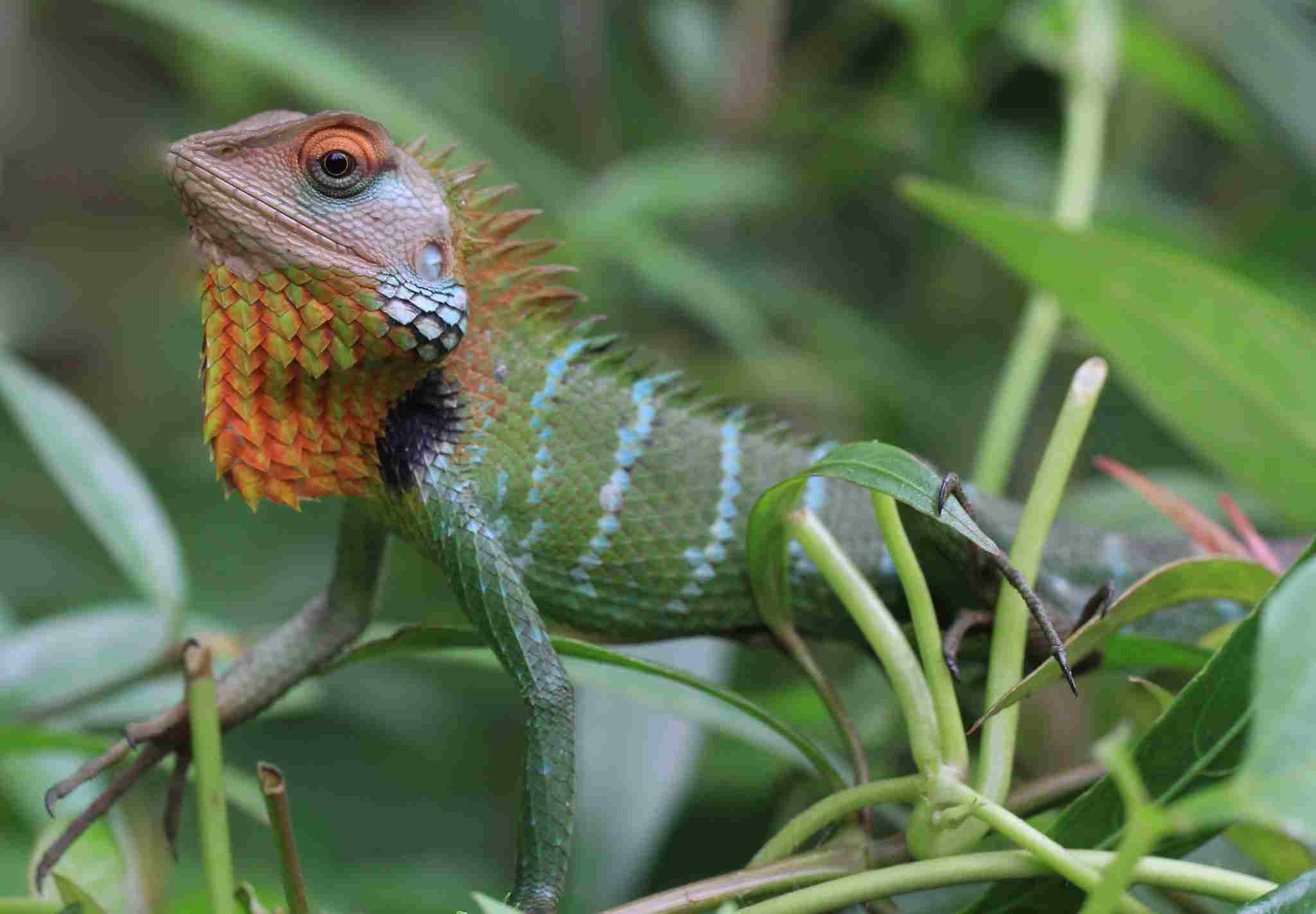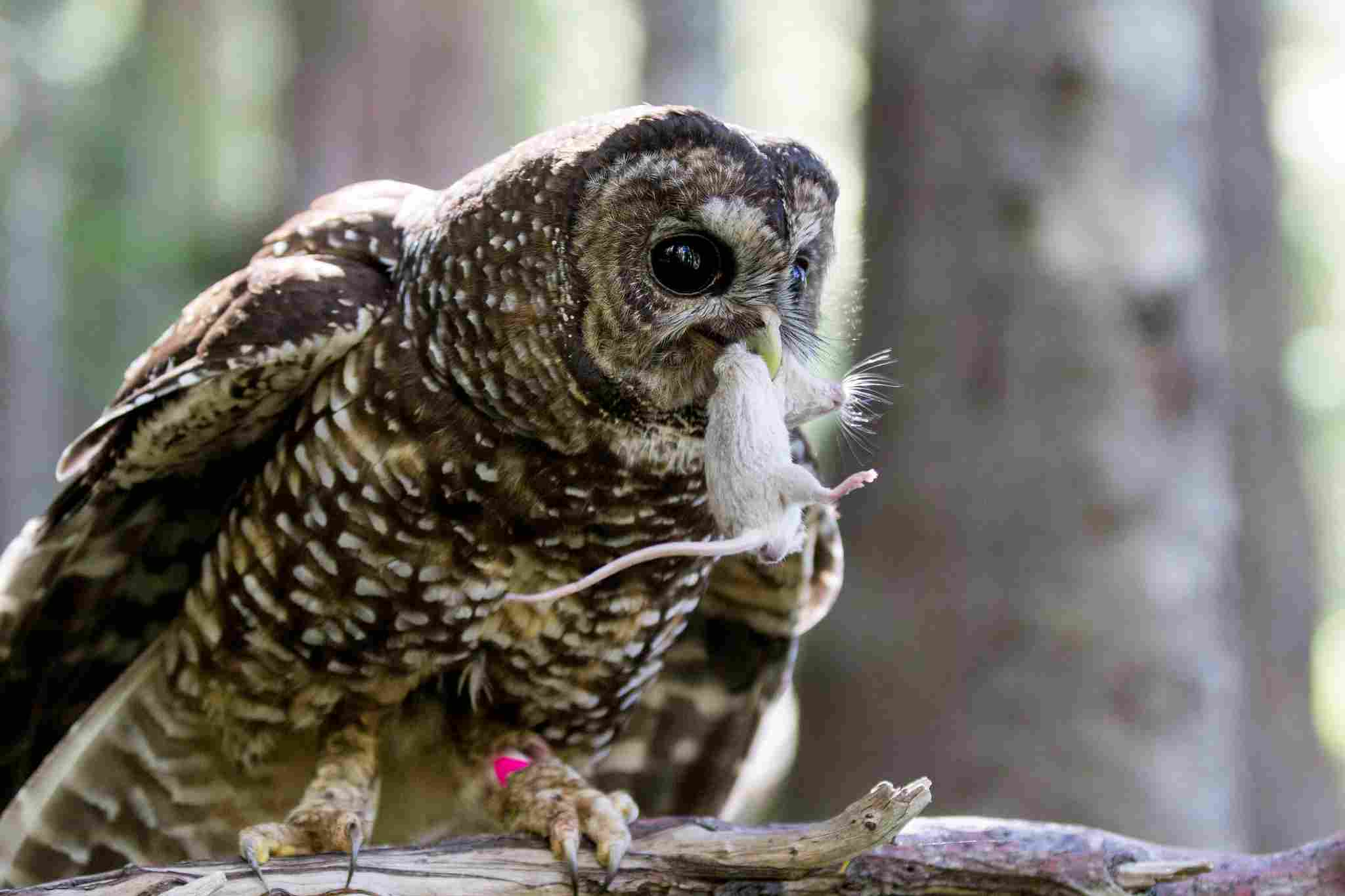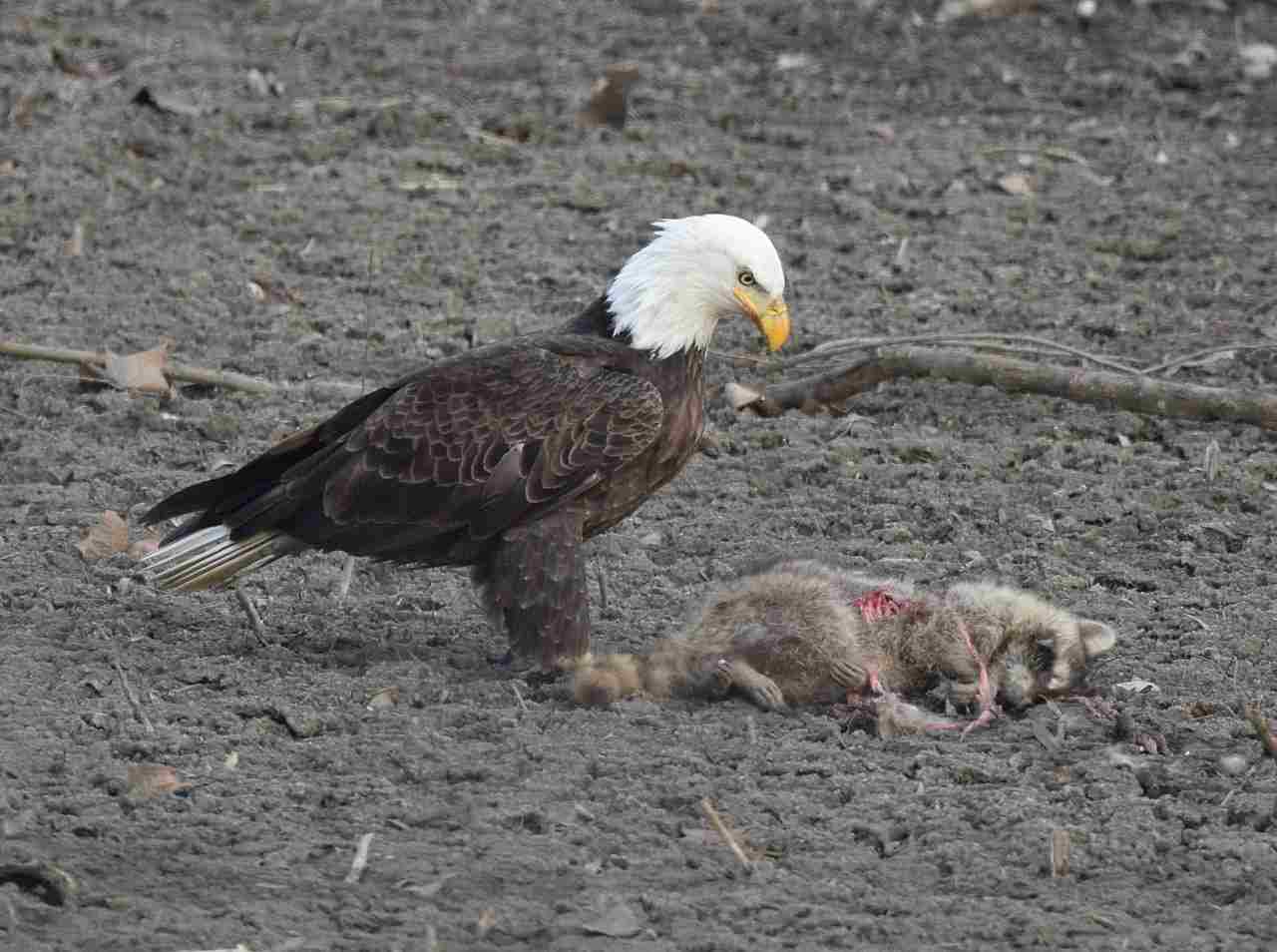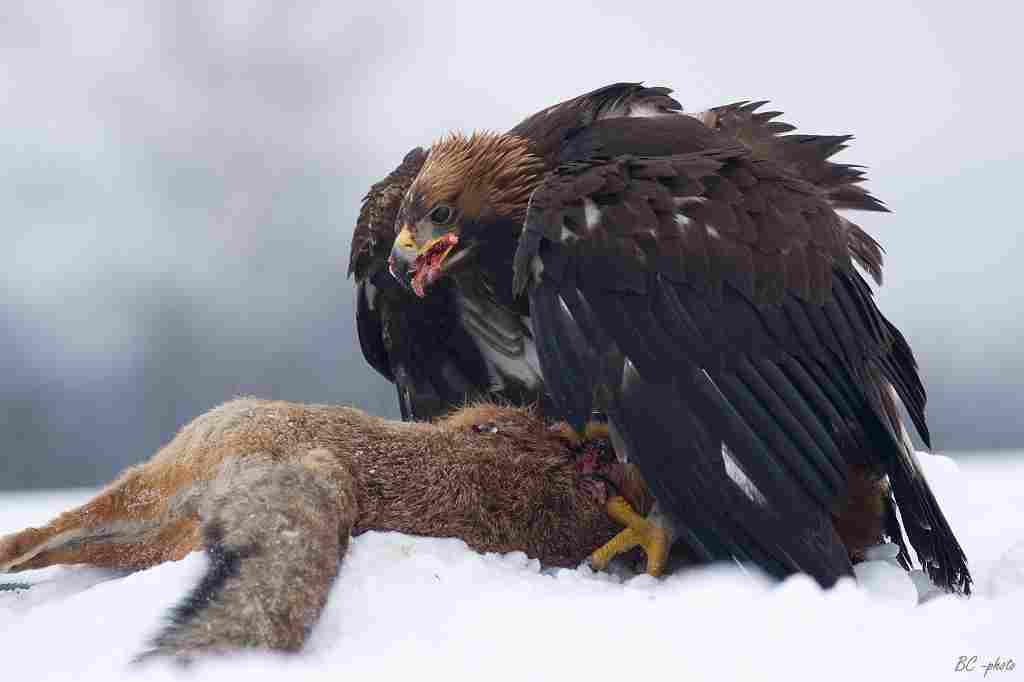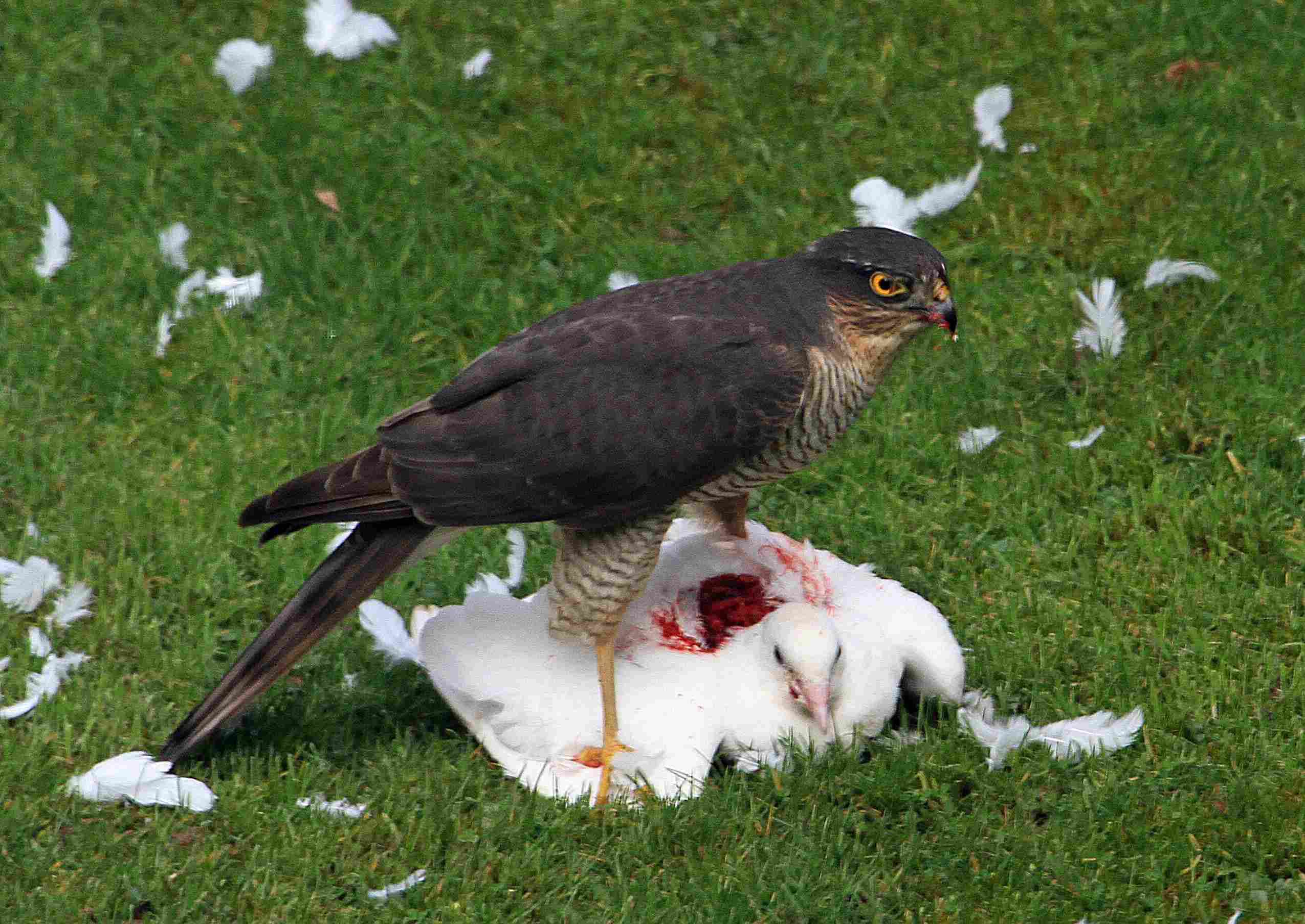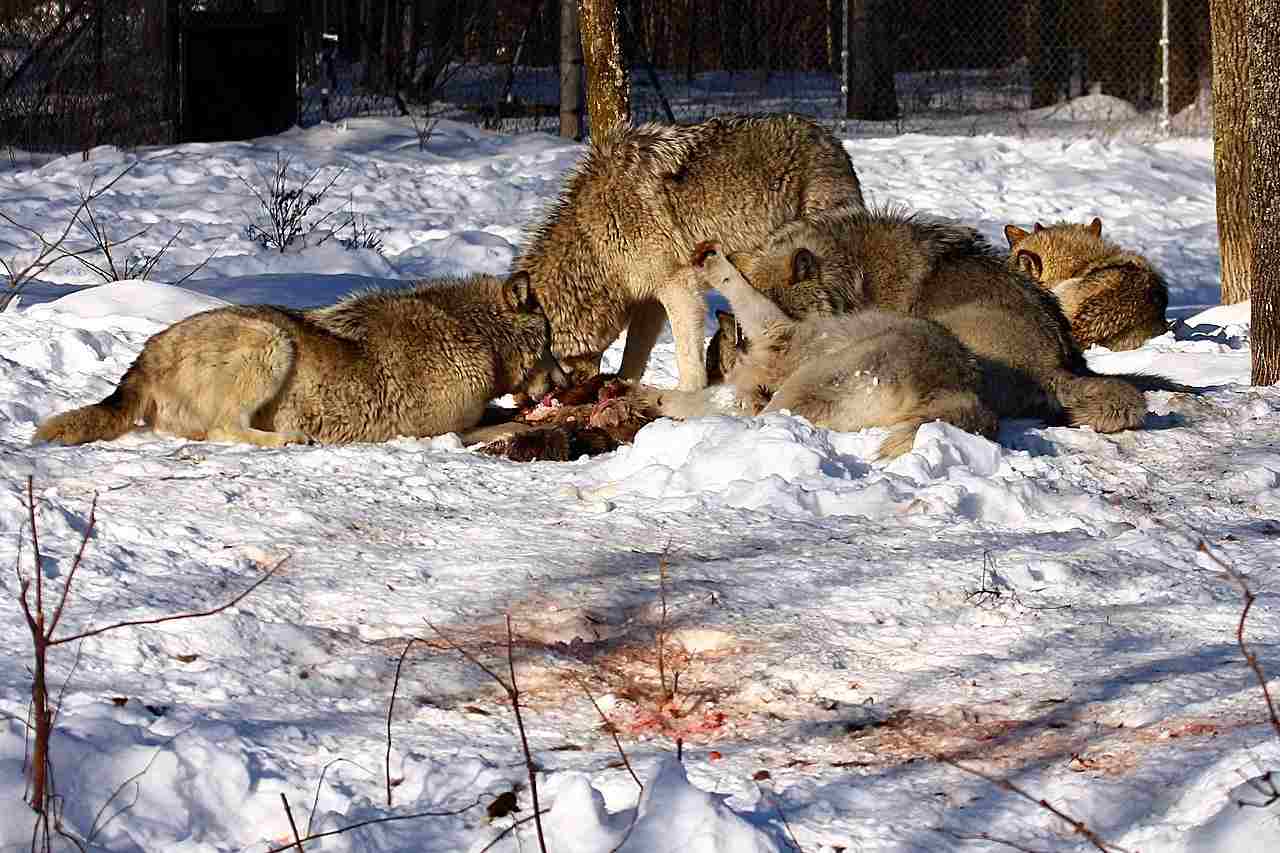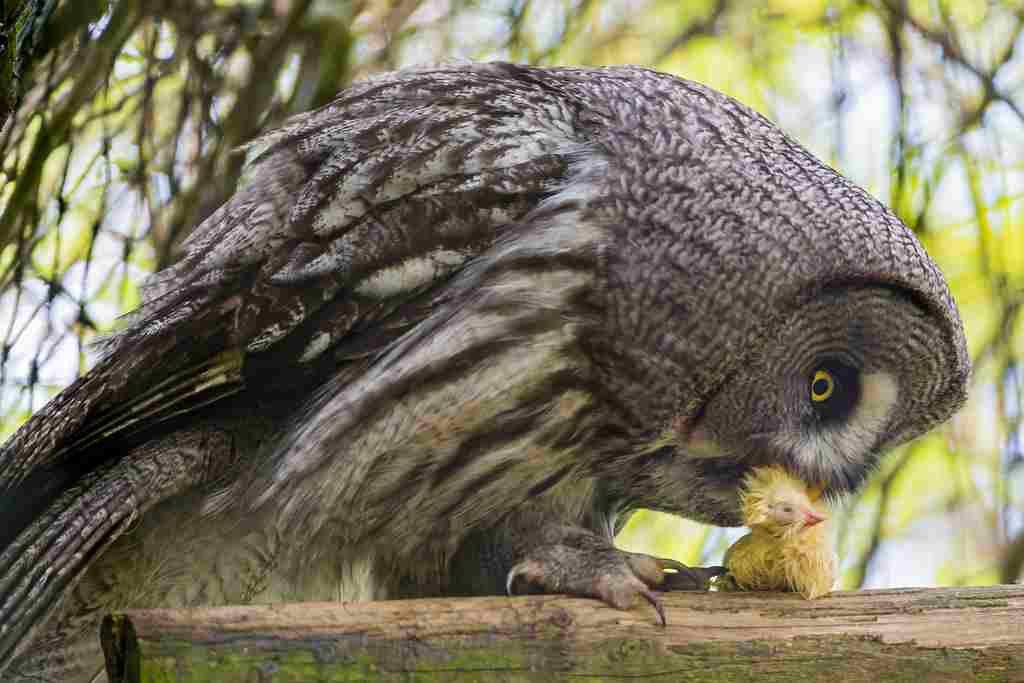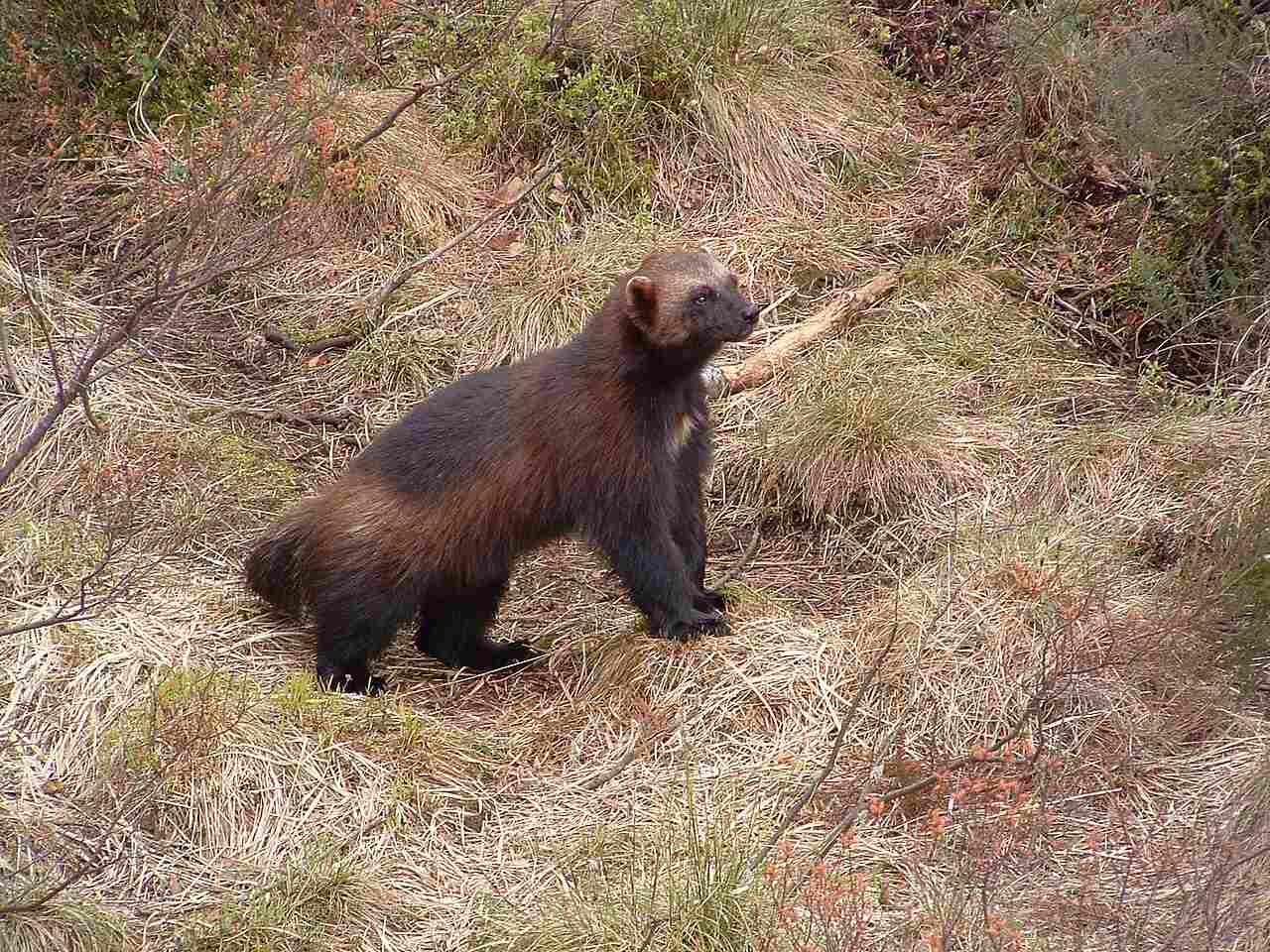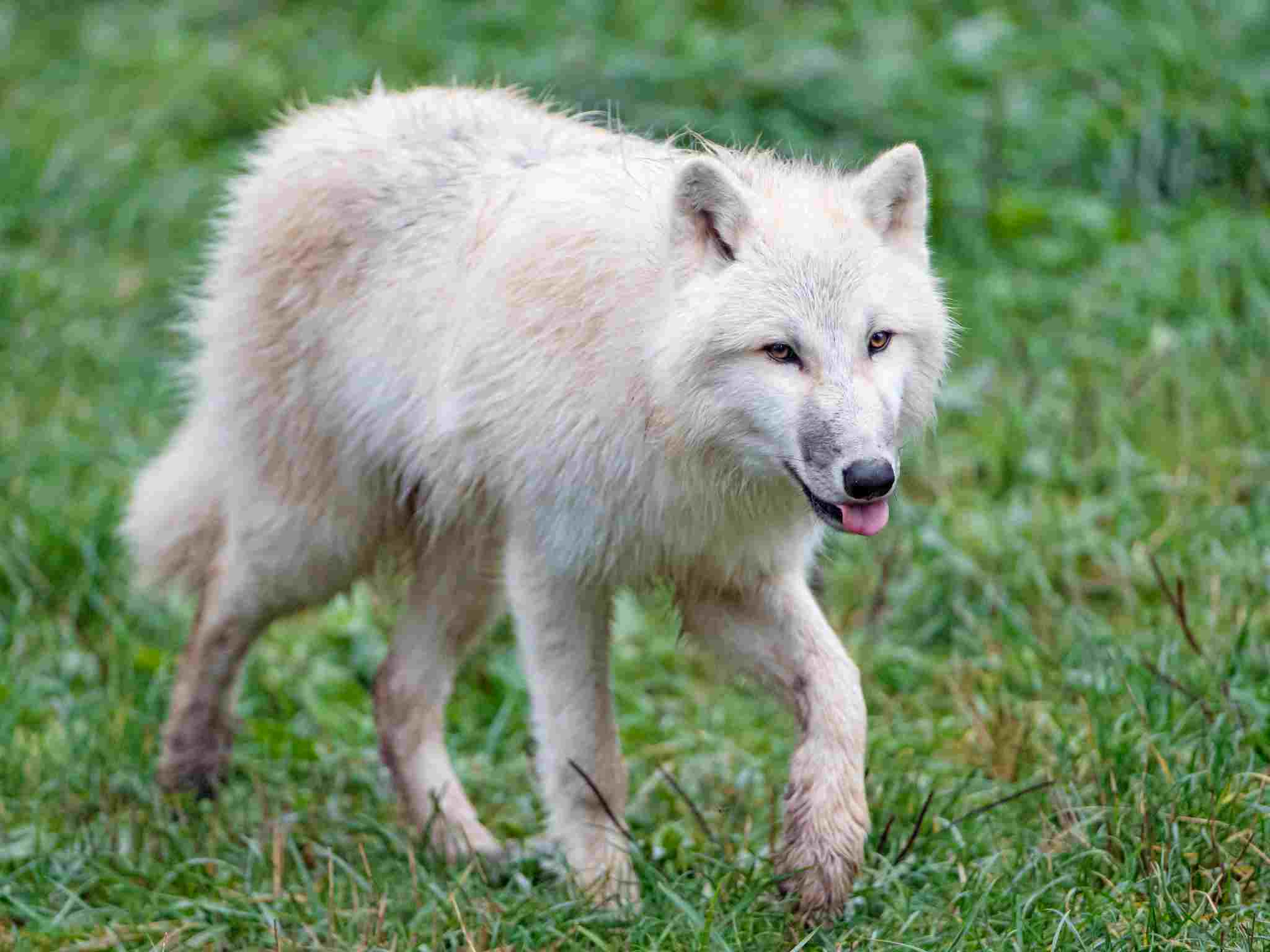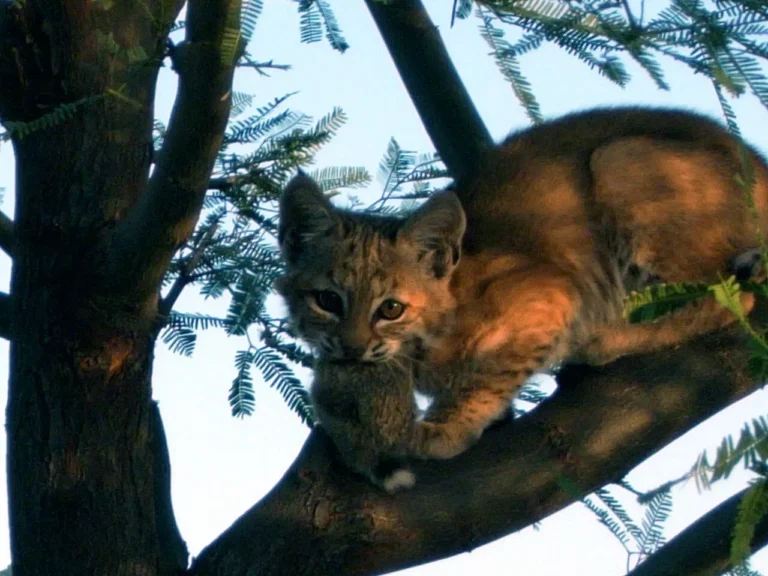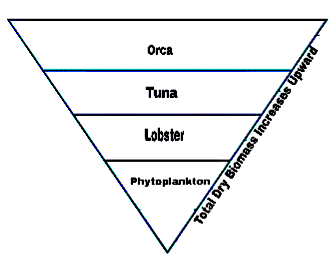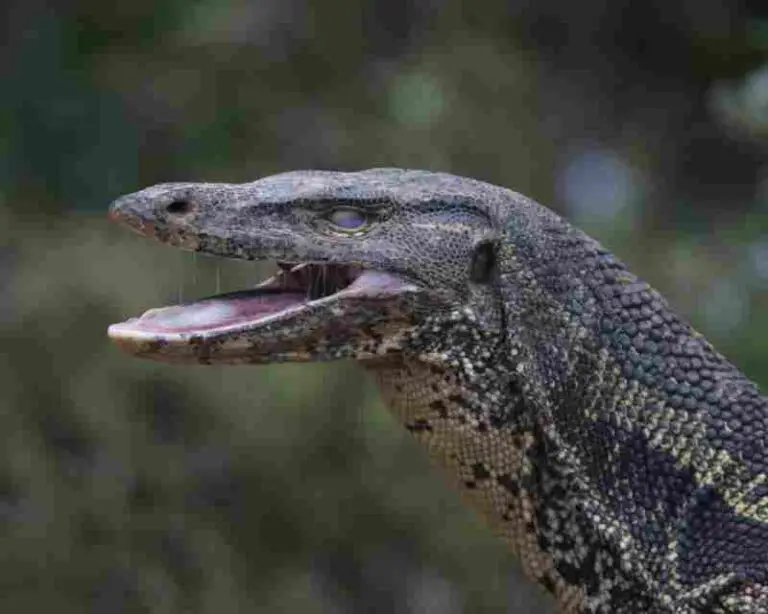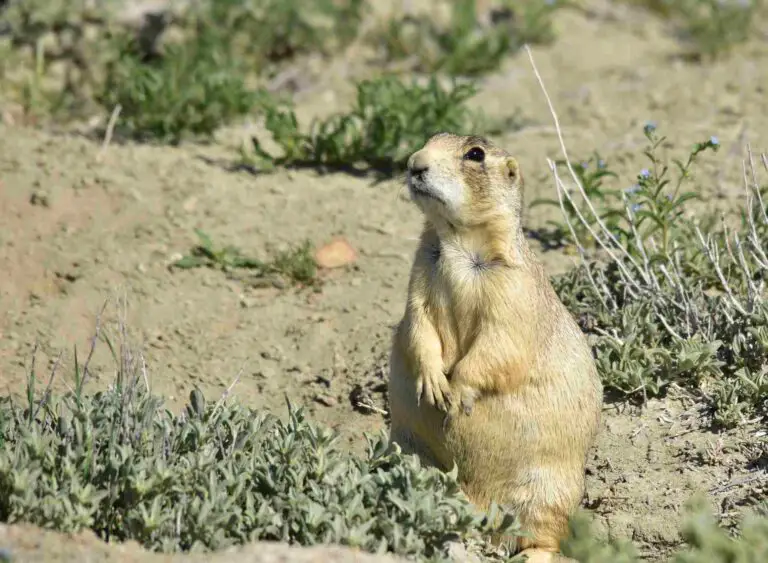11+ Predators In The Forest Ecosystem Discussed
Examples of predators in the forest ecosystem are wolves, wolverines, and bears. Wolves hunt in packs to regulate prey populations, while wolverines are solitary and opportunistic feeders. Bears are omnivores that impact plant growth and aerate soil through their activities. Other predators like owls and hawks control smaller prey, contributing to ecological balance, while eagles and pythons have unique roles as apex predators.
1. Wolf
Wolves are apex predators within many forest ecosystems, playing a crucial role in maintaining the balance of wildlife populations. As pack animals, wolves exhibit complex social structures that enable them to hunt cooperatively, targeting large herbivores like deer and elk. Their presence helps regulate prey populations, preventing overgrazing and allowing plant communities to thrive. This ripple effect of ecological benefits is known as a trophic cascade, demonstrating the wolf’s importance in maintaining ecosystem health.
Beyond their impact on prey populations, wolves also contribute to the redistribution of nutrients throughout the forest. After a successful hunt, wolves often leave behind scraps that provide food for scavengers, supporting a broader food web. Additionally, their roaming behavior encourages seed dispersal as they traverse large territories, promoting plant diversity. By fulfilling these roles, wolves help sustain the intricate web of life within forest ecosystems, showcasing their significance as top predators.
2. Wolverine
Wolverines are among the most ferocious and resilient predators in the forest ecosystem. They are solitary creatures known for their strength and determination, despite their relatively small size. Wolverines are opportunistic feeders, capable of taking down prey much larger than themselves, including deer and even smaller bears. They also scavenge, feeding on carrion left by other predators. This behavior makes them essential in recycling nutrients within the forest.
Their large territories and extensive range ensure that they cover vast areas, contributing to the dispersal of seeds and other materials across the forest. Wolverines are known for their impressive endurance and can travel long distances, even through deep snow and harsh conditions. Their presence indicates a healthy and diverse forest ecosystem, as they rely on a variety of prey and habitat types to survive.
3. Bear
Bears are versatile predators and omnivores that play a significant role in forest ecosystems. They are known for their adaptability, feeding on a wide range of food sources, from berries and roots to fish and small mammals. This omnivorous diet allows them to influence various aspects of the forest, from plant growth and seed dispersal to prey population dynamics.
Beyond their role as predators, bears also contribute to the forest ecosystem through their activities. Their digging and foraging behaviors help aerate the soil, promoting plant growth, while their movement through the forest can create pathways that benefit other wildlife. Bears also play a role in the food web by providing carrion for scavengers and helping to control certain prey populations, thus contributing to a balanced ecosystem.
4. Fox
Foxes are adaptable and agile predators commonly found in forest ecosystems. They are known for their cunning and resourcefulness, feeding on a diverse diet that includes small mammals, birds, insects, and even fruits and berries. This varied diet allows foxes to thrive in different environments and adapt to changing conditions, making them important contributors to forest biodiversity.
Their presence in the forest helps control the populations of smaller prey species, such as rodents and rabbits, which in turn supports plant health by reducing overgrazing. Foxes also play a role in seed dispersal, as they consume fruits and carry seeds across their territory. Through their scavenging behavior, they help recycle nutrients within the forest, providing sustenance for other wildlife and maintaining the ecosystem’s overall health.
5. Lynx
Lynx are stealthy and elusive predators that play a unique role in forest ecosystems. These solitary cats are known for their keen senses and agility, allowing them to hunt effectively in dense forests. Lynx primarily prey on small mammals, such as hares and rabbits, but they can also take down larger prey when necessary. By controlling the populations of these prey species, lynx contribute to maintaining a balanced forest ecosystem.
In addition to their hunting role, lynx are also indicators of forest health. Their presence suggests a well-structured forest with a diverse range of prey species. Lynx territories are typically extensive, and their roaming behavior can aid in the dispersal of seeds and other organic materials across the forest. This mobility helps maintain the ecological diversity required for a thriving forest ecosystem.
6. Puma
Pumas, also known as mountain lions or cougars, are among the largest predators in the forest ecosystem. They are highly adaptable and can thrive in a variety of environments, from dense forests to rocky mountainous regions. Pumas primarily prey on deer, but they are also known to hunt smaller mammals and birds. As top predators, pumas play a crucial role in regulating prey populations and maintaining the balance of the ecosystem.
Their wide-ranging territories mean that pumas influence a broad area, contributing to ecological connectivity across different parts of the forest. Pumas are solitary and elusive, preferring to hunt at dawn or dusk, which minimizes competition with other predators. This behavior helps create a dynamic forest ecosystem with multiple predators coexisting without excessive competition. Pumas are also essential in promoting genetic diversity among prey populations, as their predation pressures encourage healthy and adaptive traits within those species.
7. Owl
Owls are vital nocturnal predators within the forest ecosystem, renowned for their silent flight and exceptional hunting skills. These birds of prey primarily target small mammals such as mice and voles, helping control their populations and reduce crop damage. Their hunting strategies involve using keen senses of hearing and sight to locate prey in low-light conditions, making them effective nighttime predators.
Besides their role in controlling rodent populations, owls contribute to the forest ecosystem by promoting biodiversity. By preying on different species, owls help maintain a balanced food web. Additionally, their presence can serve as an indicator of a healthy forest, as they require suitable habitats with adequate nesting sites and prey availability. Their diverse diet and adaptability to various forest environments underscore their importance in sustaining ecological balance.
8. Hawk
Hawks are daytime predators that play a key role in forest ecosystems by preying on small mammals, birds, and reptiles. They are known for their sharp vision, powerful talons, and swift flight, allowing them to hunt with precision and efficiency. Hawks are often seen soaring high above the forest, scanning for prey before diving swiftly to capture their target. This predation behavior helps control the populations of various small animals, ensuring a balanced ecosystem.
In addition to their role as predators, hawks contribute to the forest ecosystem through their nesting habits. They often build large nests in tall trees, providing habitats for other organisms when they are not in use. Hawks also play a role in seed dispersal as they consume fruits and other plant materials, spreading seeds throughout their territory. Their presence in the forest indicates a healthy ecosystem, as they require a stable food supply and suitable nesting environments to thrive.
9. Eagle
Eagles are majestic birds of prey that command a top position in forest ecosystems. Known for their impressive size, keen eyesight, and powerful flight, eagles are capable of preying on a variety of animals, including fish, mammals, birds, and reptiles. Their ability to soar at great heights allows them to scan vast areas in search of food, contributing to their role as apex predators. Eagles often build large nests, or “aeries,” high in the trees, providing a unique microhabitat for other organisms when unoccupied.
As top predators, eagles help regulate the populations of their prey, contributing to the overall balance of the forest ecosystem. Their scavenging habits also help recycle nutrients by consuming carrion, reducing waste and providing food for other scavengers. Eagles play an essential role in maintaining the health and stability of the forest food web, and their presence is often considered a sign of a thriving ecosystem.
10. Python
Pythons are powerful constrictors that inhabit various forest ecosystems, known for their stealthy hunting techniques and significant size. These snakes typically prey on mammals, birds, and occasionally reptiles, relying on their strength to subdue their prey. Pythons ambush their prey, coiling around them to constrict and ultimately kill before consuming them whole. Their unique predation methods contribute to controlling prey populations and maintaining the ecosystem’s balance.
Pythons are essential in forests because they can affect the structure and composition of prey species. As they can take larger prey, they often target animals that might otherwise have fewer predators, impacting the dynamics of the food web. Additionally, pythons contribute to nutrient recycling, as their digestion processes break down organic matter, returning nutrients to the environment. This role in the ecosystem highlights their importance in sustaining a healthy forest.
11. Bushmaster
The Bushmaster is one of the largest and most venomous vipers found in forest ecosystems. Its potent venom and cryptic coloration make it a formidable predator, specializing in ambush tactics to catch prey. The Bushmaster typically targets small mammals, like rodents, and occasionally birds, injecting venom to quickly incapacitate its prey. This rapid predation helps control the populations of these smaller animals, contributing to a balanced ecosystem.
Beyond their predatory role, Bushmasters have a unique significance within the forest environment. Their presence indicates a well-preserved habitat, as they require dense forest cover and a stable food supply to thrive. As an apex predator, the Bushmaster contributes to the structure of the food web, impacting the behaviors and distribution of other forest animals. This influence on prey dynamics underscores their importance in maintaining ecological stability.
12. Spider
Spiders are crucial predators within forest ecosystems, known for their diverse hunting strategies and ability to control insect populations. These arachnids use various methods to capture prey, from weaving intricate webs to active hunting. By feeding on insects and other small invertebrates, spiders help regulate these populations, reducing the potential for crop damage and supporting the growth of forest vegetation.
Spiders also play a significant role in the forest’s nutrient cycle. As they consume their prey, they break down organic matter, returning nutrients to the ecosystem through their waste. This process contributes to soil health and plant growth. Additionally, spiders’ webs provide microhabitats for other organisms and serve as food sources for some birds. This complex interaction with the forest ecosystem highlights the spider’s role in promoting biodiversity and ecological balance.
13. Lizard
Lizards are versatile predators in forest ecosystems, contributing to the control of insect and small vertebrate populations. These reptiles use their agility and stealth to hunt a variety of prey, from insects to smaller lizards. By feeding on these creatures, lizards help maintain a balanced ecosystem, ensuring that no single species dominates the forest’s food web.
Beyond their predatory role, lizards contribute to the health of the forest ecosystem through their activities. They often bask in the sun, promoting the spread of seeds and aiding in plant growth. Lizards also play a role in soil aeration as they burrow and move through the forest floor. Their presence supports a diverse ecosystem, offering prey for larger predators and serving as indicators of a healthy and thriving forest environment.
*Summary
-
Wolf: Apex predators; hunt in packs; regulate prey populations; contribute to nutrient redistribution and seed dispersal.
-
Wolverine: Solitary; opportunistic feeders; wide territories; influence nutrient recycling and seed dispersal.
-
Bear: Omnivores; impact plant growth and prey populations; dig and forage to aerate soil.
-
Fox: Agile and adaptable; control small mammal populations; contribute to seed dispersal and scavenging.
-
Lynx: Solitary; hunt small mammals; indicators of forest health; influence prey population dynamics.
-
Puma: Apex predator; primarily hunt deer; impact large territories; promote genetic diversity in prey species.
-
Owl: Nocturnal; control small mammal populations; promote biodiversity; require suitable nesting habitats.
-
Hawk: Daytime predator; prey on small mammals and birds; contribute to seed dispersal; require stable nesting sites.
-
Eagle: Apex predator; prey on a variety of animals; contribute to scavenging; indicate a thriving ecosystem.
-
Python: Constrictor; ambushes larger prey; contribute to nutrient recycling.
-
Bushmaster: Venomous viper; ambush predator; affects prey dynamics; indicate a well-preserved habitat.
-
Spider: Control insect populations; contribute to nutrient cycling; support other organisms through webs.
-
Lizard: Control insect and small vertebrate populations; contribute to soil aeration and seed dispersal.
| Predator |
Characteristics and Role in Ecosystem
|
| Wolf |
Apex predators; hunt in packs; regulate prey populations.
|
| Wolverine |
Solitary; opportunistic feeders; influence nutrient recycling.
|
| Bear |
Omnivores; aerate soil; contribute to scavenging.
|
| Fox |
Agile; control small mammals; contribute to seed dispersal.
|
| Lynx |
Solitary; hunt small mammals; indicators of forest health.
|
| Puma |
Apex predator; impact large territories; promote genetic diversity.
|
| Owl |
Nocturnal; control small mammals; require suitable nesting sites.
|
| Hawk |
Daytime predator; contribute to seed dispersal; stable nesting sites.
|
| Eagle |
Apex predator; scavenge; indicate a thriving ecosystem.
|
| Python |
Constrictor; ambushes larger prey; nutrient recycling.
|
| Bushmaster |
Venomous viper; affects prey dynamics; indicate a preserved habitat.
|
| Spider |
Control insect populations; contribute to nutrient cycling.
|
| Lizard |
Control insect/small vertebrate populations; contribute to soil aeration.
|
